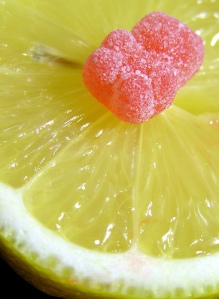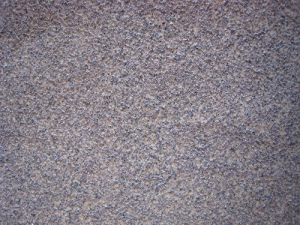The “rough” parts of wine acid and tannin are crucial for adding structure, backbone, uniqueness and longevity to wine. If you have ever slurped some vinegar then you not that harsh sensation that I am talking about. By the way, vinegar is derived from the Old French word vin aigre, meaning “sour wine”.
Now we are getting into my favorite part about wine, the acid. Acid comes from the Latin word acidus, meaning “sour”. If you’re like me and love slightly under ripe fruit, lemonade, sour patch kids, vinegar, and citrus fruits then you too will enjoy this post. If you don’t then you might as well leave now.
Some people say that variety is the spice of life, well I say that acid is the spice of life. It plays a fundamental role in giving wine flavor, freshness and that so called “interesting” factor. I cant stress enough how crucial acidity is in both red and white wines. In whites, the proper amount of acids give the wine a fresh, vibrant, focused and clean sensation. In reds, the acidity adds character while balancing the darker fruit flavors. Total acidity in wines fall in the range of .6%.
The principal acids found in wines are tartaric and malic acids, others include acetic, lactic, citric and carbonic. Tartaric acid (TA) is the most important so we will discuss this in detail. This type of acid is rarely found in other fruits and is one of the key factors for the suitability of grapes for wine making. TA is also important for giving wine its longevity. Wines destined for greatness will always have a solid and sometimes austere core of acidity and tannin that can make them undrinkable at their inception. Tartaric acid can also precipitate out into it’s salts that form on the wine side of the cork.
The climate plays a huge role in determining the percent of acidity in a grape. The cells of all living organisms go through a process called cellular respiration. The is the biochemical process by which cells break down nutrients and convert them to energy(ATP). In warmer climates, cellular respiration is increased and tartaric and malic acids are lost and sugar is gained through the extra sunlight. Learn about sugar and photosynthesis here. In cooler climates, the opposite happens, respiration slows down and acids develop while sugars take the back seat.
Cooler climates (Chablis, Champagne, Germany)—-> higher acid/lower sugar
Warmer climates(California, Australia) ——> lower acid/higher sugar.
One more thing before we go. There is a process called malolactic fermentation that sometimes takes place after the initial alcoholic fermentation. This is when the harsher and rougher malic acid(the acid in apples) is converted into lactic acid(the acid in by another set of yeasts. Lactic acid is responsible for giving Chardonnay its buttery and creamier characteristics. I think I might have to turn this acid article into a two parter because there are a couple of more things that I would like to talk about, so stay tuned for part 2.


